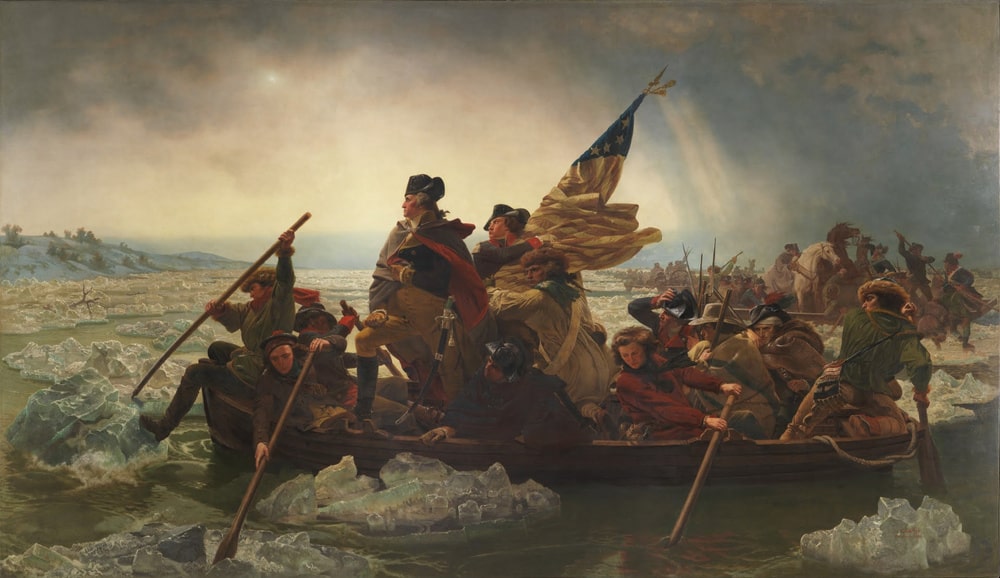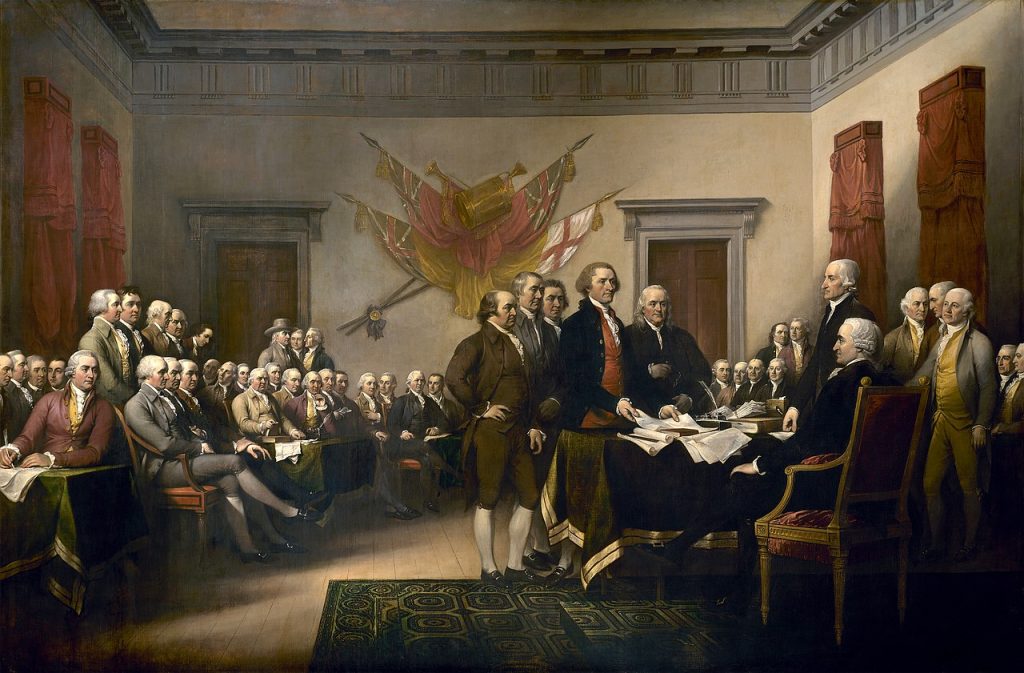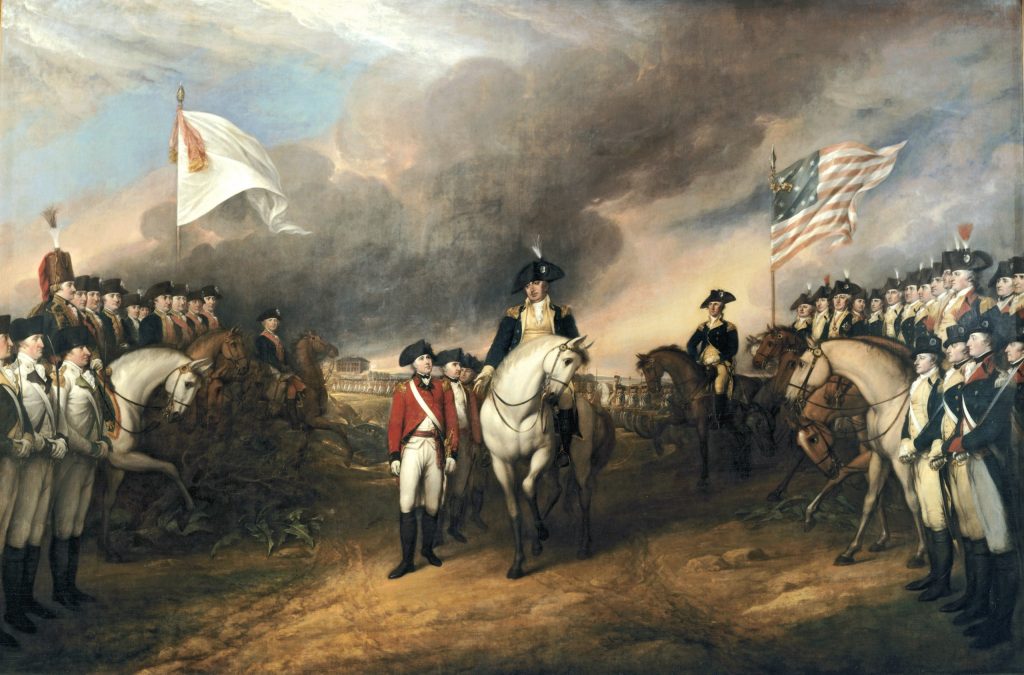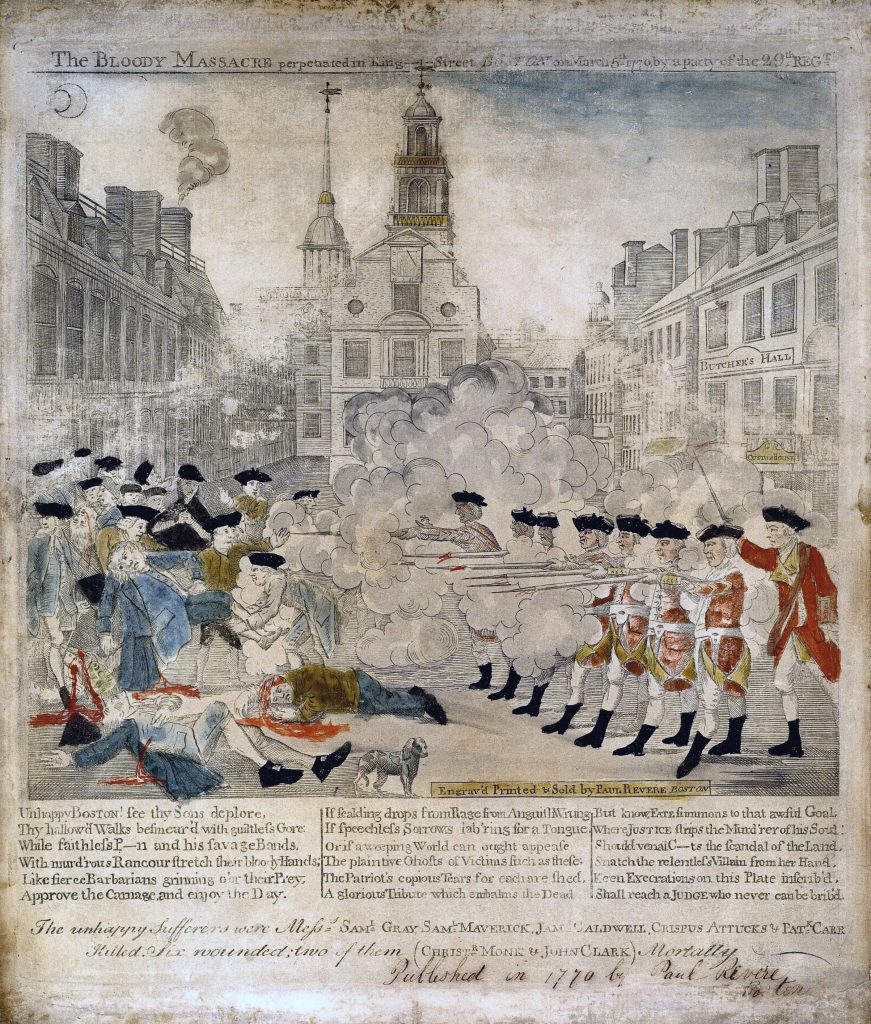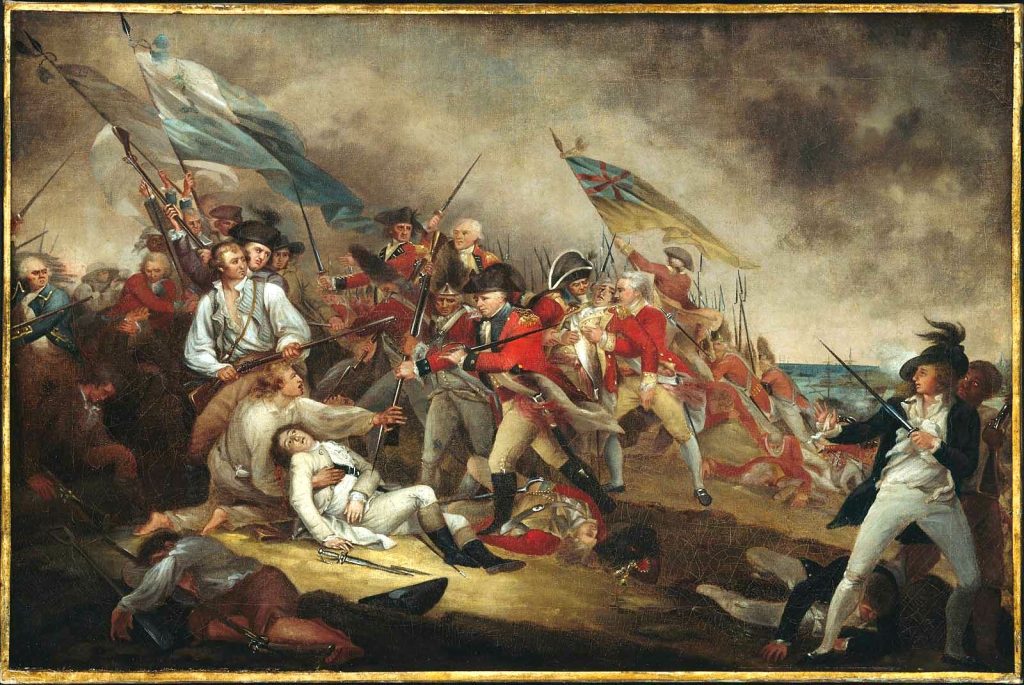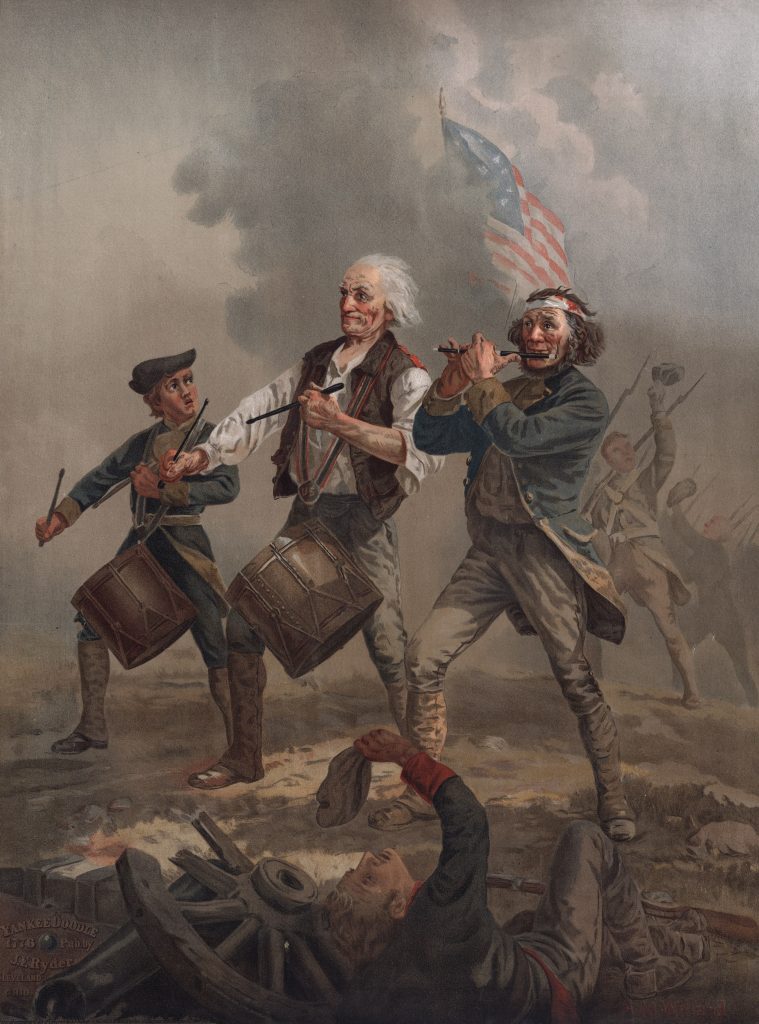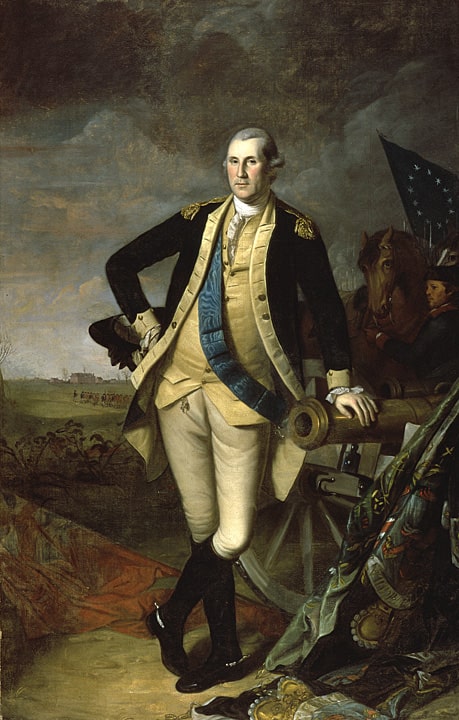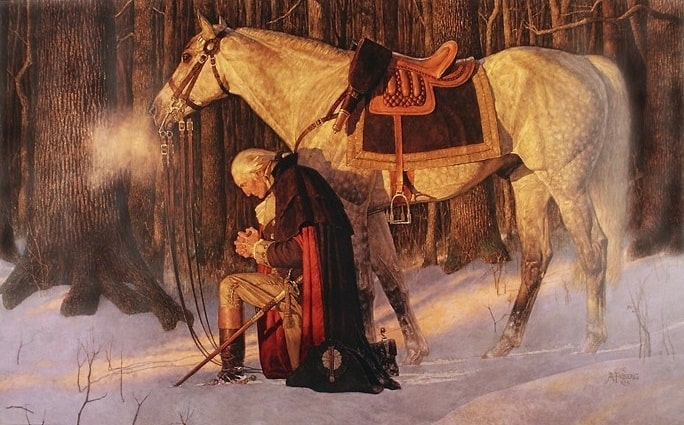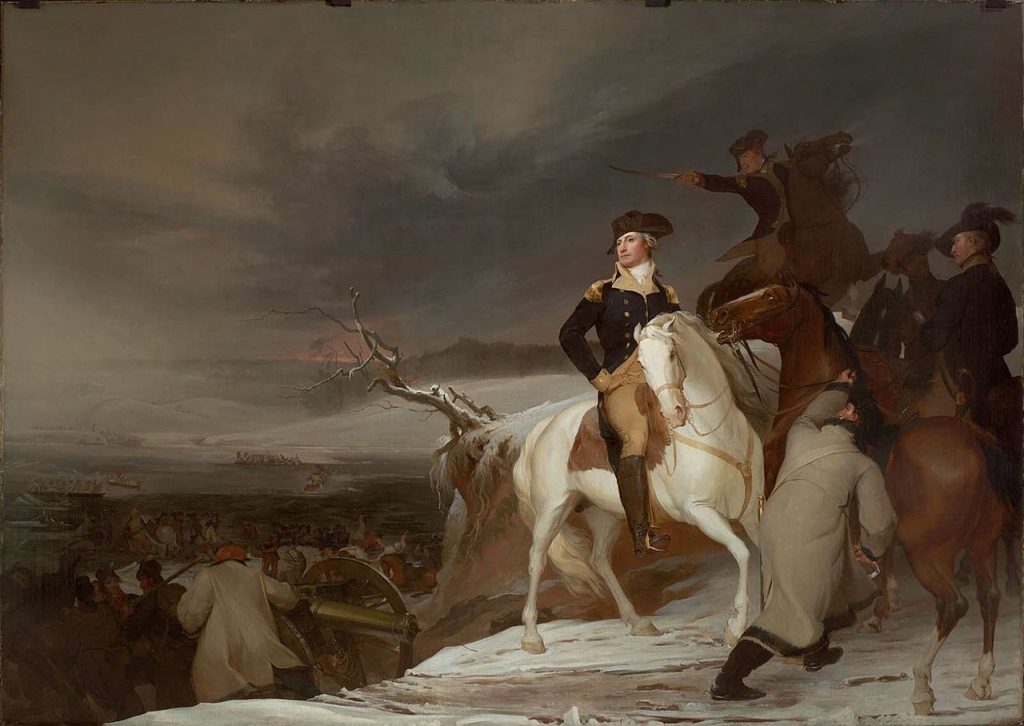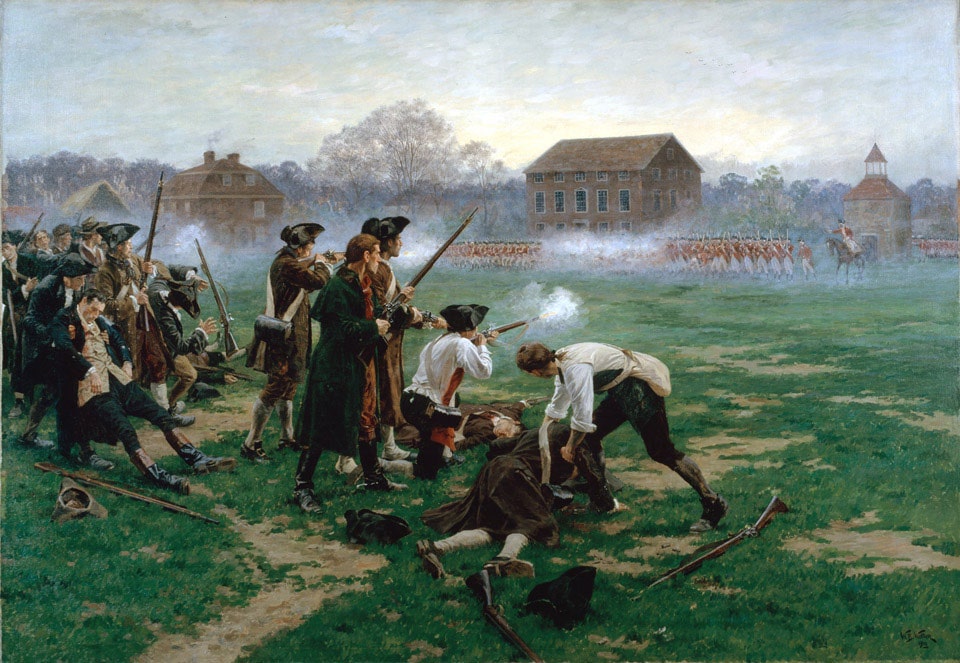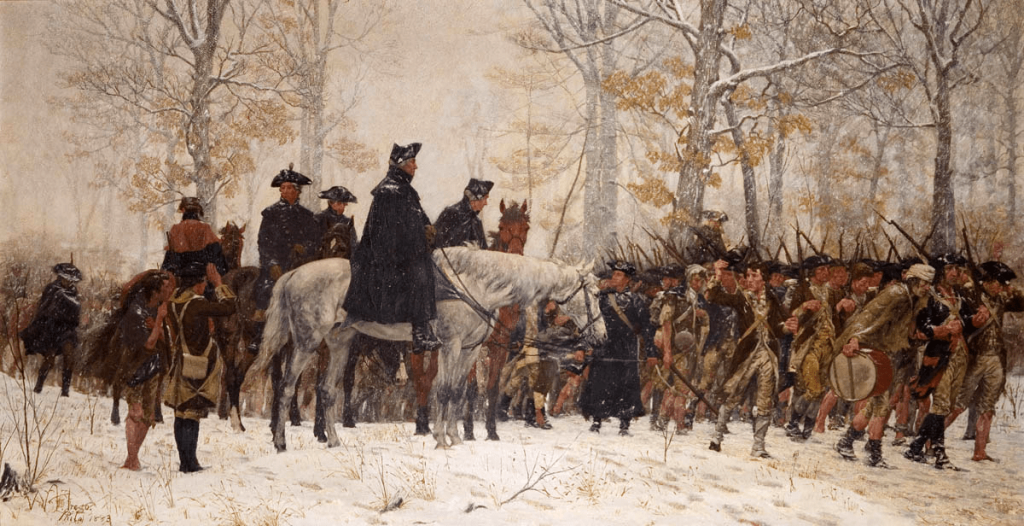Contents
Contents
Paintings are our best visual reference of what the American Revolution was like, for those who lived through it.
They offer a glimpse into what people wore, how battles were fought, and what it felt like to live during the Revolutionary War.
However, it’s important to remember that paintings of the American Revolution were not intended as realistic depictions of the events portrayed.
Most paintings were much more idealistic in nature – even those painted by artists who witnessed the events first-hand.
In this article, we’ve taken a look at 11 of the most iconic American Revolution paintings, and explained a bit about each artist’s work.
1. Washington Crossing the Delaware by Emanuel Leutze (1851)
Arguably the most iconic painting of the Revolutionary War, Washington Crossing the Delaware portrays George Washington and his troops braving icy waters on December 25-26, 1776. Emanuel Leutze’s 1851 masterpiece captures the audacity of the surprise attack on Trenton, which boosted American morale.
The painting blends historical fact with artistic license, particularly in its portrayal of the river and boat. It includes an exaggerated depiction of the ice-choked Delaware River, which is shown with massive ice floes that might not have been as formidable in reality. Additionally, Washington is shown in a heroic pose, a portrayal that likely oversimplifies the cramped and precarious conditions of the actual crossing.
Despite these debates, Leutze’s work remains a significant cultural icon, embodying the spirit of perseverance and leadership. It illustrates a crucial moment in American history with a dramatic flair that has cemented its place in the national consciousness. The painting’s minor historical inaccuracies do not detract from its overall impact as a source of inspiration and a representation of American resilience.
Learn more about Washington Crossing the Delaware.
2. The Declaration of Independence by John Trumbull (1819)
John Trumbull’s The Declaration of Independence (1819) captures the crucial moment when the Declaration was presented to the Second Continental Congress, with a focus on figures like Jefferson, Franklin, and Adams.
While the scene may not reflect the full complexity and tension of the Congress’s debates, it conveys the significance of the Declaration of Independence. Trumbull’s composition, arranging key figures prominently, helps viewers understand the historic moment, and the people behind it.
Ultimately, the painting serves as a visual record of the Declaration’s presentation, appreciated for its historical representation and the way it brings a pivotal moment in American history to life.
Learn more about The Declaration of Independence.
3. Surrender of Lord Cornwallis by John Trumbull (1820)
John Trumbull’s The Surrender of Lord Cornwallis (1820) depicts the British surrender at Yorktown in 1781, a decisive event that effectively ended the American Revolutionary War. The painting captures the moment when British General Lord Cornwallis’s troops surrendered to American and French forces, although Cornwallis himself is not shown; he claimed illness and sent his deputy instead, which Trumbull chooses not to depict.
This scene portrays the formal submission of British soldiers, shown in red, with American General George Washington and his officers, along with their French allies, positioned prominently to receive the surrender. The central figure on the horse is American General Benjamin Lincoln – Washington is on his right, and the French are on the left of the procession.
Trumbull’s work is notable for its detailed representation of the uniforms and figures, aiming for accuracy in its portrayal of the various participants. The painting highlights the alliance between American and French forces, underscoring the importance of international support in the American victory.
Learn more about Surrender of Lord Cornwallis.
4. The Boston Massacre by Paul Revere (1770)
Although technically an engraving rather than a painting, The Boston Massacre by Paul Revere (1770) played a crucial role in colonial American propaganda leading up to the American Revolution. Revere’s work depicts the event of March 5, 1770, when British soldiers killed five colonial civilians in Boston. The engraving dramatically portrays the British troops as aggressors, firing into an unarmed crowd, which wasn’t entirely accurate – it was a more chaotic and contested incident.
Revere’s engraving was instrumental in shaping public opinion against the British, presenting the event as a clear-cut case of tyranny. The piece emphasizes the victims’ innocence and the soldiers’ brutality, helping to fuel the growing revolutionary sentiment among the colonies.
The Boston Massacre is iconic in its contribution to American revolutionary history, capturing the tensions and sentiments that would eventually lead to war. It is a powerful example of the era’s use of propaganda to influence public opinion and rally support for the cause of independence.
5. The Death of General Warren at the Battle of Bunker’s Hill by John Trumbull (1786)
John Trumbull’s The Death of General Warren at the Battle of Bunker’s Hill captures a pivotal moment from the early stages of the American Revolution. It portrays the 1775 Battle of Bunker Hill, specifically the death of General Joseph Warren, a respected American leader and physician who volunteered to fight. Trumbull’s work memorializes the heroism and sacrifice of individuals like Warren, whose loss was mourned deeply by the fledgling nation.
The painting vividly depicts the intensity and chaos of the battle, with Warren lying at the forefront. Trumbull, himself a veteran of the war, utilized his firsthand experience to lend authenticity and emotional depth to the scene. Through this work, he not only pays tribute to a fallen hero, but also conveys the broader significance of the battle and its role in galvanizing American resolve.
6. Spirit of ’76 by Archibald MacNeal Willard (1876)
Spirit of ’76 by Archibald MacNeal Willard (1876) is an iconic painting that embodies the American Revolution’s fervor and patriotic zeal. Created to commemorate the United States’ centennial, it features an elderly drummer flanked by two younger companions, marching with determination and resilience. This trio, despite their differing ages, represents the enduring spirit of American independence and the unity across generations in the fight for freedom.
Willard’s painting captures the essence of patriotic sacrifice and the collective struggle for liberty. The drummers, moving forward against unseen obstacles, surrounded by battlefield smoke, symbolize the nation’s perseverance and commitment to its foundational ideals.
Learn more about Spirit of ’76.
7. George Washington at Princeton by Charles Wilson Peale (1779)
George Washington at Princeton by Charles Willson Peale (1779) captures Washington in a victorious pose following the Battle of Princeton, a key moment in the Revolutionary War.
This is one of the most popular portraits of the Revolutionary period, in part because it was produced while the war was still ongoing. Peale made several copies to send overseas, and in 2006, the original sold for $21.3m – breaking the record for the most expensive American portrait ever sold at the time.
8. The Prayer at Valley Forge by Arnold Friberg (1975)
The Prayer at Valley Forge by Arnold Friberg (1975) is a modern depiction of a legendary moment from the American Revolution. It shows George Washington kneeling in prayer during the harsh winter encampment at Valley Forge, Pennsylvania, in 1777-1778. This painting blends historical legend with artistic interpretation, capturing a moment that symbolizes Washington’s reliance on divine guidance during one of the Continental Army’s lowest points.
While not a contemporary work of the Revolution, Friberg’s painting has become iconic for its emotional and spiritual portrayal of leadership under adversity. The choice to focus on Washington in prayer, alone in a snowy landscape, reflects not just the physical hardships faced by the Continental Army, but also the immense burden of command on Washington.
Learn more about The Prayer at Valley Forge.
9. The Passage of the Delaware by Thomas Sully (1819)
In The Passage of the Delaware, Thomas Sully presents a dramatic and tense moment, with General George Washington on horseback overseeing the crossing of the Delaware River. The painting is filled with action; soldiers push a cannon down the icy bank, while others manage horses and boats against a backdrop of dark, unsettled skies. The composition focuses on Washington, elevated above the fray, serving as the calm epicenter of the operation’s fervent activity.
Sully captures the anxious energy of the Continental Army, poised on the edge of a daring endeavor that would mark a turning point in their fight for independence.
Learn more about The Passage of the Delaware.
10. The Battle of Lexington by William Barnes Wollen (1910)
The Battle of Lexington by William Barnes Wollen (1910) captures the first military engagement of the American Revolutionary War. Wollen’s painting depicts the tense and sudden violence between American militia and British soldiers on April 19, 1775. The work is notable for its dynamic portrayal of the skirmish, emphasizing the chaos and uncertainty of the moment that would ignite the war.
Through detailed figures and a sense of motion, the painting brings to life the clash that marked the revolution’s beginning, serving as a visual entry point into the conflict.
11. The March to Valley Forge by William B. T. Trego (1883)
The March to Valley Forge by William B. T. Trego (1883) depicts the Continental Army’s difficult journey to Valley Forge in December 1777, a moment that epitomizes the hardships faced during the American Revolutionary War. Trego’s painting captures the resilience and determination of George Washington and his troops as they trudge through snow, conveying the severe conditions and the spirit of endurance that characterized this pivotal winter encampment.
This artwork stands out for its portrayal of the soldiers’ struggle, with their postures and dirty clothing reflecting their exhaustion and resolve. Trego’s emphasis on the gritty reality of the march, rather than a glorified vision of war, provides a poignant insight into the challenges the Continental Army faced.


